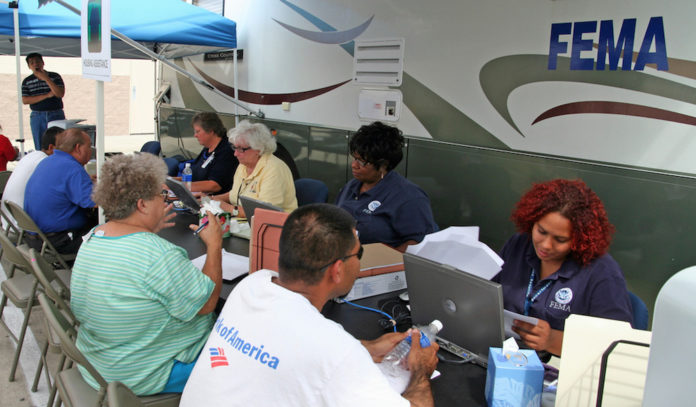
Enjoy in-person support as an individual or business at one of three newly opened FEMA Disaster Recovery Centers in Harris County.
Disaster Recovery Centers offer relief to both businesses and residents with a commitment to helping those touched by disaster rebuild as quickly as possible.
Currently, there are 39 counties included in the Texas federal disaster declaration for Hurricane Harvey and its subsequent flooding, which, as you’d imagine, has centers filling up quickly.
Harris County residents affected by Hurricane Harvey can take heart in three additional locations spread across the Greater Houston Area including, Katy, Baytown, and Greenspoint.
Recovery specialists from the Federal Emergency Management Agency (FEMA) and the U.S. Small Business Administration (SBA), the State and other agencies will be at the centers to talk about assistance and to help anyone who needs guidance in filing an application.
SBA representatives are available to answer questions about SBA’s disaster loan program and help business owners and residents apply to SBA.
Accessibility & Assistive Technology
Disaster Recovery Centers are accessible to people with disabilities. Centers have assistive technology equipment allowing disaster survivors to use amplified telephones, phones that display text, amplified listening devices for people with hearing loss, and magnifiers for people with vision loss.
Video Remote Interpreting is available and in-person sign language is available by request. The centers also have accessible parking, ramps and restrooms.
New FEMA Disaster Recovery Center Locations in Harris County
- Katy Mills Mall – 5000 Katy Mills Circle, Katy, TX 77494. Open daily 7am to 7pm.
- Baytown Community Center – 2407 Market St, Baytown, TX 77520. Open daily 7am to 7pm.
- Greenspoint Mall – 263 Greenspoint Dr, Houston, TX 77060. Open daily 7am to 7pm.
- Additional Locations – Click here for a list of FEMA Disaster Recovery Centers near you.
Where to Register with FEMA
If possible, homeowners, renters, and businesses should register with FEMA before visiting a recovery center.
- Online – Click here to register online.
- By Phone – Call 800-621-3362 (voice, 711/VRS-Video Relay Service) (TTY: 800-462-7585). Multilingual operators are available (press 2 for Spanish).
- Via the FEMA app – The app is available for both Apple and Android mobile devices. Click here to download the app.
Helpful Information When Registering with FEMA
- Address of the location where the damage occurred (pre-disaster address).
- Current mailing address.
- Current telephone number.
- Insurance information.
- Total household annual income.
- Routing and account number for checking or savings account (this allows FEMA to directly transfer disaster assistance funds into a bank account).
- A description of disaster-caused damage and losses.








